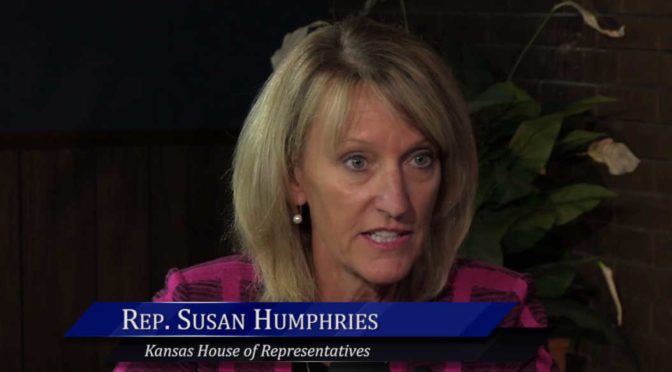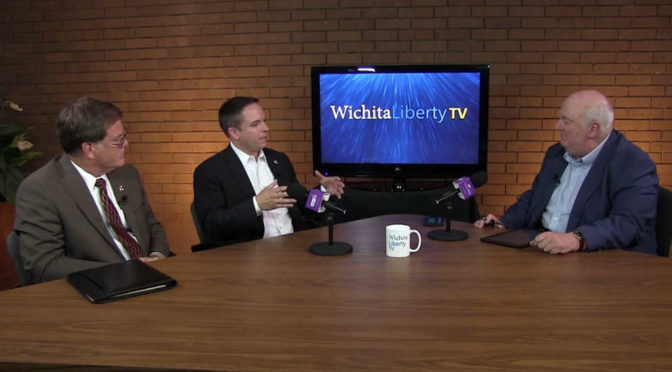Kansas school assessment standards remain at a high level, compared to other states. This is a welcome change from the past.
To evaluate the performance of their schools and students, states have their own assessments or tests. Some states have rigorous standards, meaning that to be considered “proficient,” students must perform at a high level.
But some states are less rigorous. They rate students “proficient” at a much lower level of performance.
How can we tell which states have high standards, and which states have low standards? There is a test that is the same in all states, the National Assessment of Educational Progress (NAEP). The U.S. Department of Education, through the National Center for Education Statistics (NCES), administers this test every other year. Known as “The Nation’s Report Card,” it is “the largest nationally representative and continuing assessment of what America’s students know and can do in various subject areas.”
By comparing scores on NAEP and a state’s own tests, we can learn about the state’s standards. Does a state have a large percentage of students score “proficient” on its own test, but have a much lower percentage score “proficient” on the NAEP? If so, that state’s standards are weak.
After NAEP scores are released, Education Next, a project of the Program on Education Policy and Governance at Harvard University, compares state and NAEP results and assigns letter grades to each state.
It’s important to know that this analysis does not tell us how well a state’s students perform on any tests, either state tests or NAEP. Education Next emphasizes:
To be clear, high proficiency standards do not necessarily reflect high student performance. Rather, good grades suggest that states are setting a high proficiency bar — that students must perform at a high level to be deemed proficient in a given subject at their grade level. Grades gauge “truth in advertising” by indicating the degree to which states inform parents of how well their students are doing on an internationally accepted scale.
Kansas
The good news is that Kansas grades well in the analysis of its state proficiency standards for 2017, earning an overall grade of A (A in grade 4 math, B+ in grade 4 reading, and A in both grade 8 math and reading). This is the sixth highest score among the states and means Kansas assessments have a high degree of “truth in advertising.” These grades are nearly unchanged from 2015.
This high grade has not always been the case for Kansas, however. In 2013 the state received a grade of D+ and ranked forty-first. That was a little better than 2011, when the grade was D and rank was forth-forth.
Does this mean Kansas students are doing better on tests? No. NAEP scores are mostly unchanged, or changed very little. Instead, between 2013 and 2015 Kansas adopted more realistic and rigorous standards for its tests. It raised the bar for what students needed to know to be called “proficient.”
Here is an example of how low a bar Kansas once set: In 2009, 87.2 percent of Kansas students were judged “proficient” on state tests in grade 4 reading. But only 35.1 percent were judged “proficient” on the NAEP. For that year the average difference between “Kansas proficient” and “NAEP proficient” was 45 percentage points.
Despite this large difference, Kansans were being told the state’s schools are doing very well. In 2012, Kansas Commissioner of Education Diane M. DeBacker wrote this in the pages of The Wichita Eagle: “Kansans are proud of the quality of their public schools, and a steady and continuing increase in student performance over the past decade has given us ample reason for that pride.” (Diane DeBacker: Pride in Kansas public schools is well-placed, March 20, 2012.)
Bragging like this was common, and it was unfounded. It was a lie, and a harmful lie. Being told our schools are top quality based on state standards, when those standards are very weak, is politically expedient but untruthful, and the case for needed reform is dismissed as unnecessary.
—
Notes
 From the Wichita Pachyderm Club: Sedgwick County Commission candidates Richard Ranzau and Hugh Nicks. These are Republicans vying for the District 4 nomination. Recorded June 8, 2018.
From the Wichita Pachyderm Club: Sedgwick County Commission candidates Richard Ranzau and Hugh Nicks. These are Republicans vying for the District 4 nomination. Recorded June 8, 2018.









 This means that commercial property faces 2.18 times the property tax rate as residential property. The U.S. average is 1.67. Whether higher assessment ratios on commercial property as compared to residential property is desirable public policy is a subject for debate. But because Wichita’s ratio is high, it leads to high property taxes on commercial property.
This means that commercial property faces 2.18 times the property tax rate as residential property. The U.S. average is 1.67. Whether higher assessment ratios on commercial property as compared to residential property is desirable public policy is a subject for debate. But because Wichita’s ratio is high, it leads to high property taxes on commercial property. Looking at commercial property, Wichita taxes are high. For example, for a $100,000 valued property, the study found that the national average for property tax is $2,319 or 1.93 percent of the property value. For Wichita the corresponding values are $3,261 or 2.72 percent, ranking ninth highest among the 50 largest cities. Wichita property taxes are 41 percent higher than the national average, for this scenario.
Looking at commercial property, Wichita taxes are high. For example, for a $100,000 valued property, the study found that the national average for property tax is $2,319 or 1.93 percent of the property value. For Wichita the corresponding values are $3,261 or 2.72 percent, ranking ninth highest among the 50 largest cities. Wichita property taxes are 41 percent higher than the national average, for this scenario.




